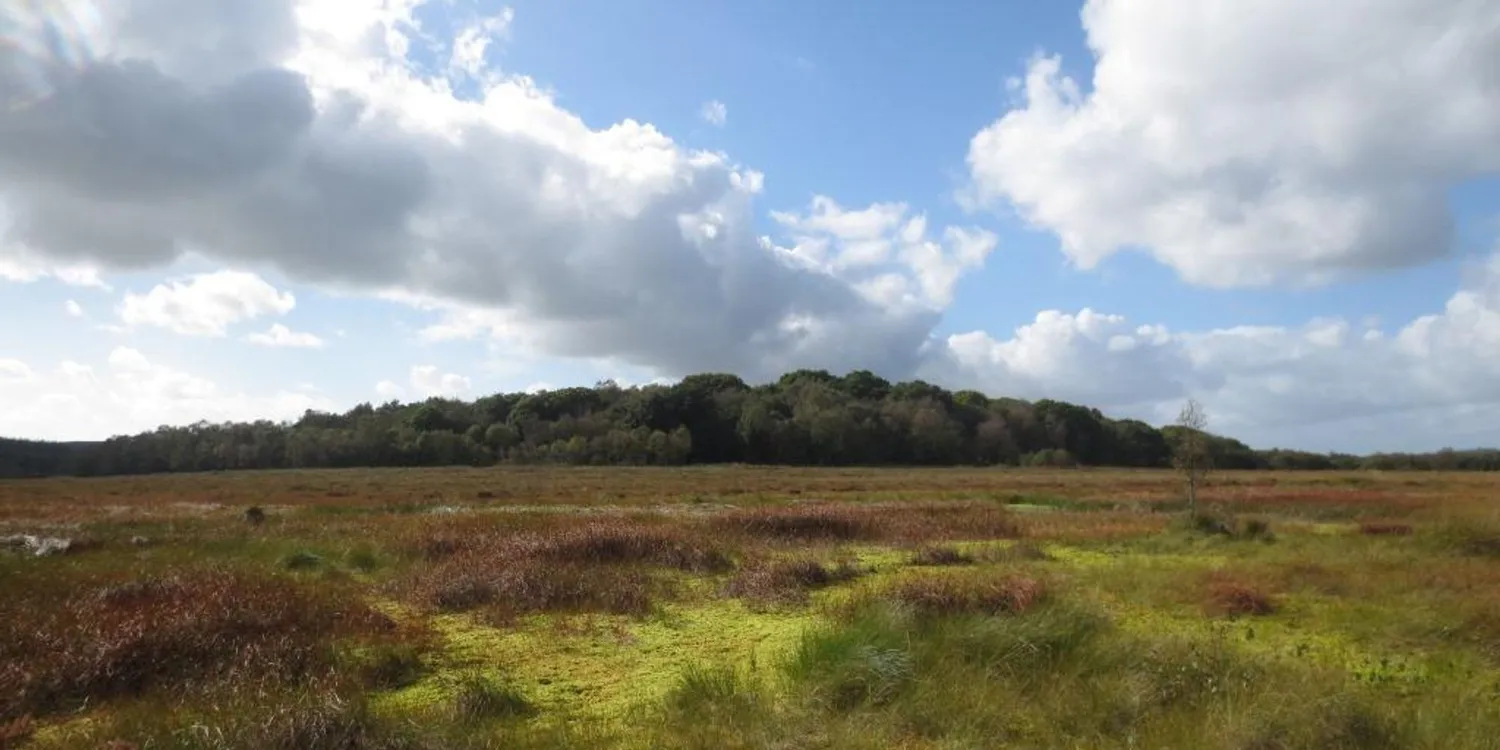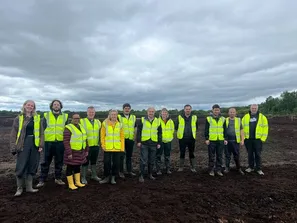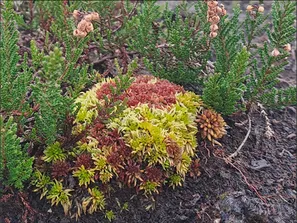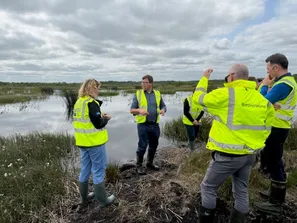21 Jul 2023
Raised bog formation
Sphagnum moss species are key plants in the development and existence of bog habitats. Some species can hold 15 to 20 times their dry weight in absorbed water and tolerate very harsh conditions such as nutrient deficiency, high acidity and waterlogged environments. Bogs simply would not exist as we know them without Sphagnum.
Raised bogs for example, begin to develop in wet shallow depressions, often shallow lakes. Over time, wetland vegetation such as reeds, rushes and other plants live, die and so leave dead matter behind in the substrate. As the organic matter content of the substrate begins to grow, due to the increasing biomass of dead vegetation, the layer of growing vegetation on top is eventually lifted above the influence of the local groundwater. At this point, the living vegetation has become ombrotrophic (exclusively rain fed).
The result, in wetter climates, is the development of a wet, nutrient poor and acidic environment in which Sphagnum species thrive. As the living plants (acrotelm) grow upward, the Sphagnum tissue beneath the living surface of the bog (catotelm) is submerged beneath the weight of the growing layer above. This dead tissue does not decay in the anoxic, waterlogged conditions. Instead, the dead matter will become peat over time, while the living tissue will continue to grow, driving the formation of a raised bog dome.
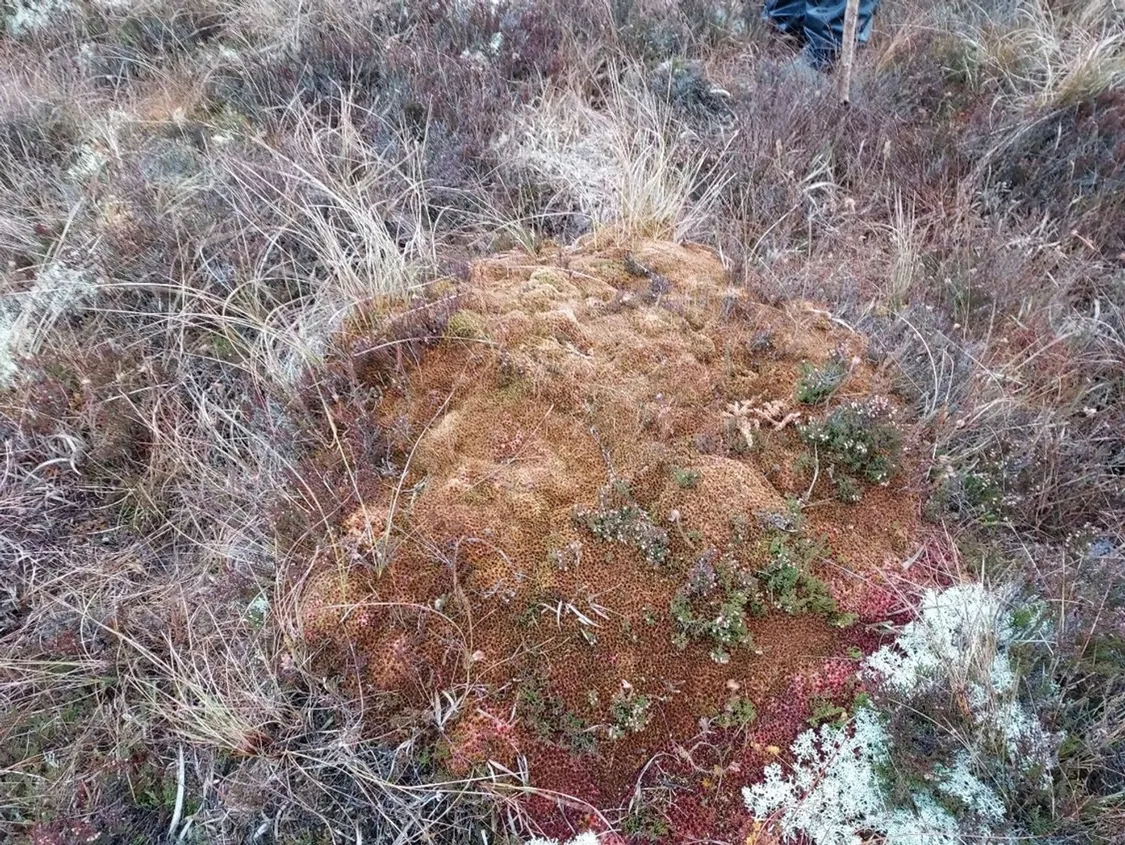
Distinctive brown coloured Sphagum beothuk forming a large hummock on a raised bog.
Sphagnums role in carbon sequestration
The growth habit described above is directly responsible for the development of one of nature’s most efficient carbon traps. A meter squared of intact, active raised bog sequesters more carbon annually than the same area of tropical rainforest. As such, Sphagnum area very important group of plants with regard to fighting climate change. The ability of Sphagnum to store water also plays an important role in regulating heavy rainfall events within a water catchment. In time times of heavy rainfall, healthy peatlands can store water in Sphagnum moss, slowly release this water over time, thereby helping to mitigate the impacts associated with sudden heavy rainfall.

Sphagnum cuspidatum occurring within a bog pool. This species occurs in pools and the wettest parts of peatlands.
Sphagnum as an indicator species
Different Sphagnum species can be used as valuable indicators of peatland type and their overall condition. However, Sphagnums are widely believed to be tricky to identify and so many ecologists simply aggregate them, classifying them as “Sphagnum species”. In doing so, ecologists are forfeiting valuable information on nutrient availability, hydrology and habitat condition that these species provide.
Like any other plant group, there are generalists and specialists Sphagnum species. For example, Sphagnum rubellum can be found on nearly any bog habitat in Ireland. Small cushions and hummocks can be found from relatively dry cutover bog to the wettest parts of an active raised bog.
Sphagnum beothuk and S.austinii both distinctive species. Sphagnum beothuk has a characteristic chocolate brown colouring. While S.austinii has a range of colours, the large size of the individual capitulums (the top of the plant) and the relative compactness of the hummocks as a whole can be used to reliably identify the species. Both species generally inhabit the wetter parts of a bog and if abundant and healthy, can be used as an indicator of bogs in good condition.
Sphagnum cuspitdatum is one of the most aquatic species and is generally found in the acidic bog pools in the wettest parts of the bog. Interestingly, it can be found within the drainage ditches of industrially harvested bogs where no other Sphagnum species may be present.
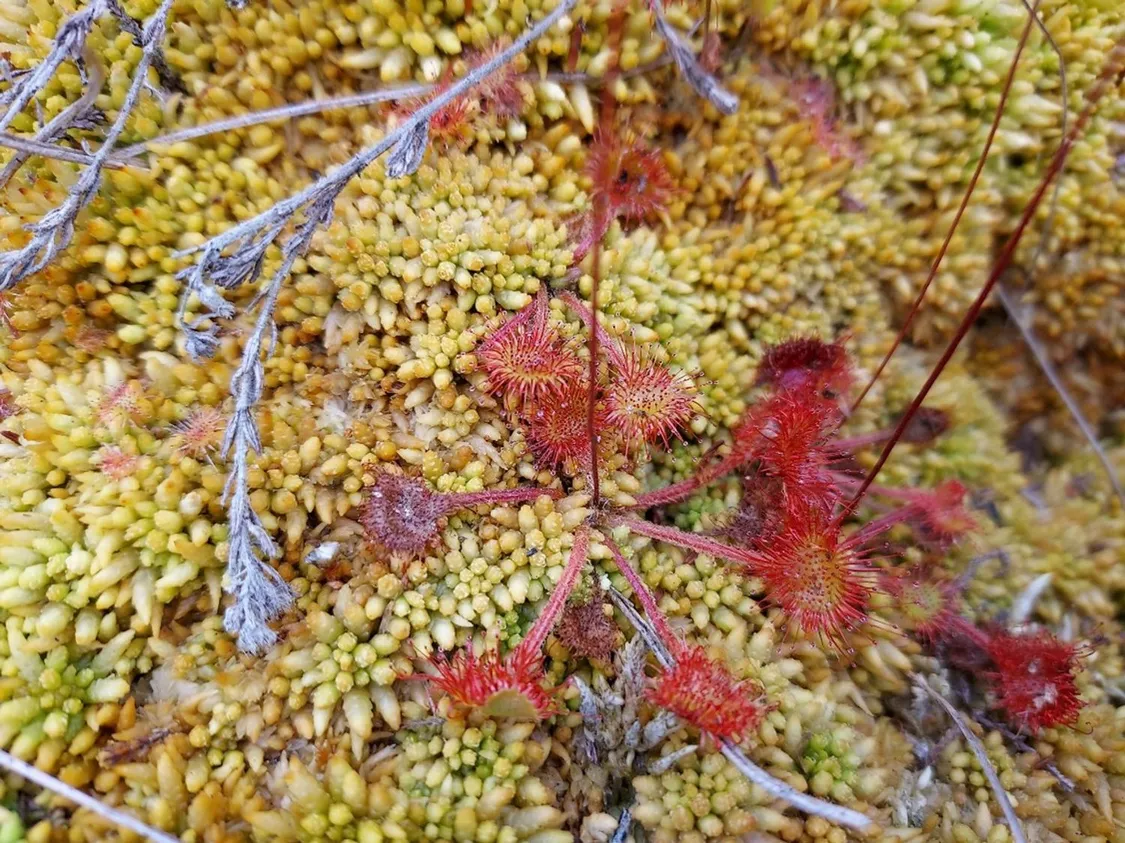
Sphagnum papillosum, with round leaved sundew growing on top.
There are species that are found in base rich, fen conditions and some that are considered upland species. To get to know Sphagnum species is to open a large encyclopaedia on the various natural history processes and conditions of our boglands. However, don’t be put off getting to know the more readily identifiable species and build on this. Knowing just a few species can really add to the satisfaction of exploring our unique peatlands.
